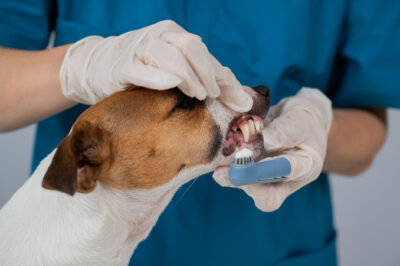How to Keep Dogs Warm in Winter

There’s so much to love about winter. But, for pet parents in cooler climates, the season means more than frosty frolics and sweater weather. Frigid temperatures can also increase the risk of hypothermia and frostbite in dogs and worsen health conditions like arthritis. So, when temperatures plunge, it’s natural for pet parents to start thinking about how to keep dogs warm in winter.
With that in mind, we asked veterinarians for their best advice about keeping dogs safe, warm, and toasty all winter long.
Find out what the experts say about protecting dogs from the cold, whether they’re short-coated or super fluffy. You’ll discover tips to combat the chill within your home and without. Plus, given the surge in homeless dogs, we have ideas for keeping stray pups safe and warm, too.
Do Dogs Get Cold?

Don’t let that fur fool you. Despite the extra layer, dogs experience cold weather much like we do.
“Just because they have a fur coat does not mean they are fine in cold weather,” says Dr. Amber Karwacki, DVM, with Heart+Paw Callowhill in Philadelphia, PA.
Generally, veterinarians recommend exercising caution when temperatures dip below 45 degrees Fahrenheit (7 degrees Celsius), especially with smaller and short-haired breeds. “Below 32 degrees Fahrenheit, you should be cautious, and below 20 degrees Fahrenheit, it’s potentially dangerous for any dog,” says Dr. Lisa Lippman, DVM, director of Virtual Medicine for Bond Vet.
The rules for dogs and cold weather vary by breed, however, so there is some wiggle room here. Cold-weather dogs like Alaskan Malamutes, Siberian Huskies, Saint Bernards, and Samoyeds have thick double coats to shield them from the elements.

“Arctic breeds that have been acclimated to the weather can stay out in temperatures down to zero for as long as they want” says Dr. Karwacki. However, that’s only if you are monitoring them or have proper shelter provided, she adds.
This general rule changes for indoor dogs. “Large and medium-sized breeds can be in temperatures down to zero degrees for 30 minutes if they are exercising,” says Dr. Karwacki. If they are standing still, the recommended time frame is only 10 minutes.
This window is even tighter for smaller, short-haired dogs outside in cold weather. They shouldn’t be outside at all when it’s below zero degrees Fahrenheit. And even if the temperature is between 10 and 32 degrees Fahrenheit, limit their outside time to no more than 10 minutes, Dr. Karwacki cautions.
The cold can also take a heavy toll on younger pups and senior dogs, regardless of their size or breed. If in doubt, ask your veterinarian for guidance on how much and when to limit outside time during the winter months.
Keeping Dogs Warm: Tips and Recommendations

Prolonged exposure to cold temps can put any dog at risk. However, there are plenty of things you can do to protect your pet from cold weather threats. Our veterinarian-recommended tips for how to keep dogs warm in winter have you covered.
How to Keep Indoor Dogs Warm in Winter
Even if your home feels cozy and warm to you during the winter months, it may not be the same for your dog. Dogs may feel cold in winter even while indoors, especially if they’re sensitive to temperature changes, says Dr. Lippman. Here’s how to keep dogs warm in winter while indoors.
Provide a Warm and Comfortable Place to Rest
Veterinarians recommend investing in a heated dog bed, dog heating pad, or thick blanket during colder months. Positioning your dog’s bed a safe distance in front of a heat source can also help keep your dog warm, says Dr. Karwacki. She recommends against using electric blankets because of their potential to cause burns when too hot.

Keep Indoor Temperatures Comfortable
Keeping your thermostat between 68 to 72 degrees Fahrenheit (20 degrees to 22 degrees Celsius) is ideal, says Dr. Lippman. Also, “Make sure your dog’s sleeping area is away from windows or doors where drafts can lower the temperature,” she adds.
If you’re unable to maintain an ideal indoor climate, consider fitting your pup with dog pajamas for extra warmth. Clothing should be comfortable, made of soft, breathable material, and allow for easy movement.
How to Keep Dogs Warm Outside in Winter

Unfortunately, there’s only so long you can take refuge inside when the weather outside is frightful. Nature calls, regardless of how cold it is outside. Plus, dogs can get stir crazy when cooped up inside for too long. Here’s how to keep dogs warm outside in frigid weather.
Invest in Good Winter Gear
Veterinarians generally recommend outfitting a pup with a dog coat or sweater when temperatures drop. There are exceptions, however. “Arctic breeds (such as Huskies and Malamutes) will not need any outdoor gear when walking or playing outside,” says Dr. Karwacki.
As for other dogs and cold weather: “Large and medium breed dogs should not need any outdoor gear for short walks outside in colder temperatures. Small breed dogs should wear coats when outside,” adds Dr. Karwacki.
Some features to look for in a dog coat are comfort and fit, ease of putting it on and taking it off, ease of cleaning, waterproofing features, and coverage for legs and head.
Protect Other Exposed Areas
Booties can protect your dog’s feet from cold, snow, and ice. Also “If there are a lot of salted sidewalks in your area, consider having your dog wear booties to protect their feet,” recommends Dr. Karwacki.
Applying pet-safe balms to the paws, nose, and other exposed areas can protect a dog from cracking and cold burns, adds Dr. Lippman.

Winterize Your Dog Carrier
Dog carriers are designed to be open air. “This unfortunately does not help to keep them warm in the winter,” says Dr. Karwacki. Consider placing sweaters and warm blankets in the carrier, and covering part of it with a blanket to prevent cold from entering, she recommends.
Monitor Your Dog Closely
Every dog handles cold weather differently, so pay attention to your dog’s behavior and comfort level. “When in doubt, it’s better to err on the side of caution and provide extra warmth and protection,” says Dr. Lippman. “Especially during the winter months.”
How to Keep Outdoor Dogs Warm in Winter
The easiest way to keep a dog warm in winter is (obviously) to bring them indoors. Some cold-weather dogs may prefer to be outside, though. And stray dogs in freezing weather may wander into your backyard in search of warmth. So here are some expert recs for how to keep outdoor dogs warm.
Provide an Outdoor Dog House for Winter
Outside dogs who have been properly acclimated to the cold may be able to tolerate the cold weather better. However, they still need a good winter dog shelter. “An outdoor shelter should be insulated, airtight, and waterproof,” says Dr. Karwacki. “The opening should have a door flap to protect from the wind.”

If the shelter can’t be situated off the ground, Dr. Karwacki recommends insulating the floor. You can use a good blanket, dog bed, or add warm bedding such as straw to insulate dogs from the cold.
Check On Them Frequently
Cold-weather dogs aren’t immune from the effects of frigid temperatures. “Regularly check on outdoor dogs to ensure they are warm and healthy, and bring them inside during extreme weather,” says Dr. Lippman.
Dangers of Cold Weather for Dogs

Cold weather isn’t just an issue of comfort. It can result in pain, suffering, and even death. Here are some key winter health hazards for dogs, along with signs to help you identify them.
Frostbite – When temperatures dip below 32 degrees Fahrenheit, dogs (and all mammals) are at risk of developing frostbite. A dog’s ears, paws, and tail are especially vulnerable, says Dr. Lippman. “This can lead to tissue damage and infection,” she says.
Holding up a paw or yelping are clear signs that your dog is in pain and in danger of developing frostbite. Not all signs appear immediately, however, and can take hours, or even days to appear on the tips of the ears and tail.
Hypothermia – Another risk of keeping dogs in freezing weather is hypothermia, which occurs when a dog’s body temperature drops dangerously low. This can lead to “lethargy, weakness, and potentially fatal complications if untreated,” Dr. Lippman says.
Although hypothermia can occur in any dog, it’s more common in pups that are very young, old, small or have health issues. Shivering is an initial sign that your dog may have hypothermia.
Respiratory Issues – Breathing in extremely cold air can irritate a dog’s respiratory system. This can lead to “coughing or difficulty breathing, especially in breeds prone to respiratory problems,” says Dr. Lippman.
Cold Weather-Aggravated Health Conditions – Veterinarians say cold weather can aggravate conditions like diabetes, kidney disease, heart disease, and arthritis. “Regular vet check-ups during the colder months can help ensure your dog remains healthy and resilient against the winter chill,” says Dr. Lippman.
Irritated Paws – Cold temperatures, ice, snow, and even indoor heating, can result in cracked paws, redness, swelling, and even bleeding.
Exposure to Road Salt – Salt may be effective for use on icy streets and sidewalks, but it can also cause a dog’s paws to become dry and irritated. It’s also potentially hazardous if a dog licks off salt from his paws. Pet Poison Petline says ingesting a large amount of salt can be toxic, in which case a dog would need medical care.
How to Keep a Dog Warm in Winter FAQs

When is it too cold to walk your dog?
The answer varies based on a dog’s size, breed, age, and health status. But, in general, when the temperature drops below 20 degrees Fahrenheit, it’s too cold for most dogs to be out for a long time, says Dr. Lippman. “In such conditions, limit outdoor time and consider using protective gear like coats and booties,” she recommends.
Do dogs get cold at night?
Yes, if the dog isn’t kept in a warm area, says Dr. Karwacki. “To help keep your dog warm at night, a bed or blanket for them to snuggle in should be provided,” she says.
How to know if your dog is cold
Dr. Karwacksi says some of the more common signs are shaking and shivering, curling into a smaller position, seeming uncomfortable (like holding paws off the ground), and whining. “Dogs that are cold will also try to seek shelter if outside or find areas of warmth near a heater if inside,” she adds.
What temperature is ok for dogs to sleep outside?
Apart from cold-weather dogs (who still need an outdoor dog house for winter) most dogs should sleep indoors. “If necessary, ensure they have a well-insulated, heated shelter and avoid letting them sleep outside if the temperature drops below 45 degrees Fahrenheit (7 degrees Celsius),” recommends Dr. Lippman.









